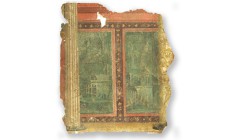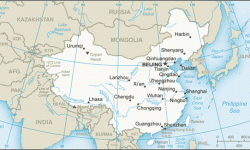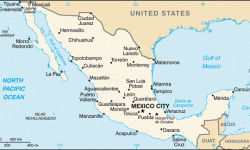Crime, Corruption, and Collateral Damage: Large Infrastructure Projects as a Threat to Cultural Heritage
Mackenzie, S. and Yates, D. (2020) ‘Crime, corruption, and collateral damage: Large infrastructure projects as a threat to cultural heritage’, in Lo, T.W., Siegel, D. and Kwok, S.I. (eds) Organized Crime and Corruption Across Borders: Exploring the Belt and Road Initiative, London: Routledge.
The policing of organized crime involves the regular use of predictive methods, which go by a variety of names and orientations: Threat assessment, scenario planning, strategic risk assessment, and so on (Hamilton-Smith and Mackenzie, 2010). The prospective nature of these futurism tools has been fiercely criticized, with the predictive element of transnational organized crime policy being perceived by observers to have a tendency to overestimate emerging threats, raising levels of alarm without sufficient empirical justification (van Duyne and Vander Beken, 2009). With this in mind, we begin this chapter by explicitly noting that any projections of the impact of the One Belt, One Road (OBOR) initiative on the trafficking of cultural heritage objects are speculative. That said, we can make some sensible observations about the possible effects that OBOR may have on organized criminal involvement in the transnational problem and has increasingly begun to be seen as such by international policy developments. The issue of heritage destruction via the growing commodifi- cation of antiquities first gained international attention in the 1960s through critiques penned by archaeologists and anthropologists who observed that the colonial-era practice of bringing home cultural spoils from domineering exploits abroad had been subsumed by an increasingly organized cross-border criminal trade in cultural artifacts (e.g., Coggins, 1969, 1970). These antiqui- ties, destructively stolen from temples and grave sites, exported in violation of local law, and trafficked to the world’s centers of high art dealing, were being purchased by institutional and private collectors, often for staggering prices. This illicit trade was perceived of as undermining archaeological science and national sovereignty, and as challenging the ethos of a shared “cultural heritage of humankind” (Mackenzie and Yates, 2017a).
In 1970, UNESCO responded with an international treaty that, as of July 2019, has 137 States Parties including most antiquities source and market countries (UNESCO, 1970). The UNESCO convention is based in an underlying trade in illicit antiquities. Antiquities trafficking is a significant contemporary transnational crime philosophy of “protection and recovery”, in the sense that it provides mechanisms for increasing the protection of cultural objects in situ and for their repatriation to their country of origin in the event of theft. Punishment of traffickers, and in more general terms a criminal justice approach to the issue, was not a driving force behind the contemporary development of international law in this field (Bator, 1983), nor was criminalization addressed in the follow-up UNIDROIT Convention of 1995, which was similarly conceived as providing civil law mechanisms for the recovery of stolen cultural property (UNIDROIT, 1995).
For criminologists, the watershed in the international policy attitude to antiquities trafficking came with the UN Convention Against Transnational Organized Crime (United Nations, 2000), which was premised on “travails” (policy discussion documents) that contained explicit consideration of antiquities trafficking, which was now labeled an “emerging form of crime” and became increasingly characterized thereafter as a type of organized crime (Mackenzie, 2011a, 2011b). Studies have shown that for many instances of cultural object trafficking, this is a fair characterization of the market-oriented theft of antiquities, the networks that move them across borders, the facilitators who support their insertion into global circuits of commerce, and the serious nature and consequences of these crimes that destroy archaeological and heritage sites in vulnerable countries, causing the irretrievable loss of the historical knowledge they hold (Alderman, 2012; Campbell, 2013; Mackenzie and Davis, 2014).
This chapter is based on empirical information gathered and analysis conducted through our research into antiquities trafficking, which is now quite extensive (e.g., see Mackenzie, 2005a, 2005b, 2006, 2007, 2009, 2011a, 2011b, 2013, 2015; Yates, 2014a, 2014b, 2015a, 2015b; Yates et al., 2017; Mackenzie of this transnational criminal market that this research has revealed, we can see that there are clearly risk factors that OBOR will increase organized criminal opportunities in this field. We divide these criminal risks into three categories: (1) in which development threatens the physical integrity of cultural heritage sites (i.e., “source” risks); (2) in which improvements to transport infrastructure provide increased opportunities for the rapid movement of illicit commodities from source toward the marketplace (i.e., “transit” risks); and (3) which add to or further support the narratives available to market actors through which they rationalize, neutralize, or justify participation in the criminal trade of antiquities (i.e., “market” risks). In this chapter, we will consider these possible risks in turn.


